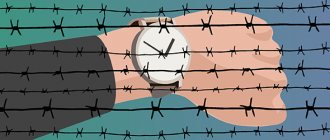Commentary to Art. 4 of the Criminal Code
1. The principle of equality of citizens before the law corresponds to Art. 7 of the Universal Declaration of Human Rights of 1948, which declared that all people are equal before the law and are entitled, without any distinction, to equal protection of the law, and Art. 19 of the Constitution of the Russian Federation, which enshrines the principle that everyone is equal before the law and the court.
2. The criminal law principle of equality of all before the law means that every citizen (this means not only Russia, but also a foreigner and a stateless person) who has violated the criminal law must be held accountable if his actions contain elements of a crime.
This principle is not limited to the requirement of an equal obligation to bear responsibility for the crime committed, but also implies an equal opportunity to legally avoid it.
3. Equality of all before the law does not exclude the existence of special rights and benefits for certain categories of persons. Some exceptions are provided for by the criminal law itself in relation to women, elderly men, and minors. Such persons are subject to criminal liability, and all benefits are based on the law and are equally applicable to all citizens and, accordingly, do not constitute violations of the principle of equality of citizens before the law.
What do the owners think?
The BMW 4 Series gives its owners a lot of driving pleasure. However, this comes at the cost of reliability problems.
Reviews indicate that supercharged engines are capricious in terms of fuel quality and tend to consume more than 1 liter of oil per 1 thousand kilometers. Shock absorber struts quickly fail when driving frequently on rough roads, and the iDrive complex needs to be periodically reflashed.
Second commentary to Art. 4 of the Criminal Code of the Russian Federation
1. The principle of equality of citizens directly follows from Art. 19 of the Constitution of the Russian Federation, reflects the provisions of international law. This principle is manifested in the establishment of the same grounds and limits of criminal liability, the same grounds for exemption from criminal liability and punishment, and the same conditions for repaying the criminal legal consequences of a criminal record.
2. Equality before the law also means that when applying the Criminal Code, nothing should worsen a person’s position in comparison with others prosecuted.
3. The principle of equality of citizens before the law applies only to bringing a person to criminal liability, but it does not apply to the measure of punishment, which is always individualized.
Restyling
The BMW 4-Series update procedure was carried out in 2022. On the outside, the configuration of the headlight optics has changed (LEDs instead of bi-xenon), bumpers, and wheel design. Inside, the finishing materials, instrument panel, steering wheel, and iDrive system have been updated.
In particular, the new navigation system Professional has been integrated. The iDrive interface has become more optimized and understandable in terms of its use. As for the hardware, the technical characteristics have not changed, with the exception that the 184-horsepower unit has disappeared from the diesel engine range.
Third commentary to Article 4 of the Criminal Code of the Russian Federation
Article 4 of the Criminal Code almost textually accurately reproduces a similar principle enshrined in Chapter. 2 of the Constitution of the Russian Federation. This principle, due to its obviousness and clarity, does not require extensive commentary. However, in relation to criminal law, as well as other branches of law, it requires some additional clarification.
Law, as is generally recognized, is a universal legal scale for the comparison and equal legal assessment of actions that are identical in content and negative consequences within the framework of typical, general manifestations. But the same action (inaction), from the point of view of their general legal assessment based on the law, is committed by different people and under completely different specific circumstances. To the latter, the law, regardless of the act committed, gives legal significance to circumstances either mitigating or aggravating the punishment. Due to this immutable fact, subjects who have committed the same crime may find themselves in a position of actual inequality: some of them will be prosecuted and subjected to penalties, while others are exempt from the specified criminal legal consequences of their illegal behavior.
Thus, the principle of equality of citizens before the criminal law carries, by its very nature, certain contradictions: to any citizen, regardless of gender, race, nationality, language, origin, property and official status, place of residence, attitude to religion, beliefs, affiliation to public associations, etc., the law, on the one hand, makes absolutely the same requirements and establishes the same measures of criminal liability (within the sanction of the article of the Criminal Code), and on the other hand, it takes into account the personality of the offender and other specific mitigating circumstances of the crime committed , allows for the possibility of imposing a punishment below the lowest limit or even exemption from criminal liability and punishment.
The criminal law, and this is its specificity, to a certain extent corrects the principle of equality of citizens before the law by the norms of three institutions of criminal law - sentencing (Chapter 10, Articles 60 - 70, 73), exemption from criminal liability (Chapter 10, Articles 60 - 70, 73). 11, Art. Art. 75 - 78) and exemption from punishment (Chapter 12, Art. Art. 79 - 83). Outside the framework of the regulations of these legal institutions, which oblige one to take into account the individual and other circumstances, the criminal law imposes absolutely identical requirements (prohibitions or orders) on any person, which are predetermined by the principle of equality of citizens before the law. And these provisions of criminal legislation in no way contradict the constitutional principle of equality of citizens before the law, for law is just an equal scale of assessment of similar actions, which, however, are committed by different people acting in different life situations and under different specific circumstances. The latter, but again in accordance with the requirements of the law, can mitigate or aggravate the punishment. ‹ Article 3. Principle of legalityUp Article 5. Principle of guilt ›
Brief history of the model
- 2010 - start of production and sales of the Kawasaki ER-4 (Ninja 400R) model.
Model:
Kawasaki ER-4N / ABS (Japan), Kawasaki Ninja 400R / ABS (Japan, Canada, New Zealand).
Frame number:
ER400B-XXXXXX.
Factory designation:
ER400BBF, ER400CBF - Kawasaki ER-4N; EX400CBF, EX400DBF – Kawasaki Ninja 400R.
- 2011-2012 - no significant changes.
Model:
Kawasaki ER-4N / ABS (Japan), Kawasaki Ninja 400R / ABS (Japan, Canada, New Zealand).
Frame number:
ER400B-XXXXXX.
Factory designation:
ER400BCF, ER400CCF - Kawasaki ER-4N; EX400CCF, EX400CCFA, EX400DCF – Kawasaki Ninja 400R.
- 2013 - no significant changes.
Model:
Kawasaki ER-4N / ABS (Japan), Kawasaki Ninja 400R / ABS (Japan, Canada, New Zealand).
Frame number:
ER400B-XXXXXX.
Factory designation:
ER400BDF, ER400CDF - Kawasaki ER-4N; EX400CDF, EX400CDFA – Kawasaki Ninja 400R.
- 2014 - the Kawasaki ER-4N model is discontinued, and the Kawasaki Ninja 400R is restyled and changes its name to Kawasaki Ninja 400.
Model:
Kawasaki Ninja 400 / ABS (Japan).
Frame number:
EX400E-XXXXXX.
Factory designation:
EX400EEF / EX400EEFA
- 2015 - no significant changes.
Model:
Kawasaki Ninja 400 / ABS (Japan).
Factory designation:
EX400FFF / EX400FFFA
- 2016 - no significant changes.
Model:
Kawasaki Ninja 400 / ABS (Japan).
Factory designation:
EX400EGF, EX400FGF
- 2017 is the final production year.
Model:
Kawasaki Ninja 400 / ABS (Japan).
Factory designation:
EX400EHF, EX400FHF
Chassis and brakes
The motorcycle has a steel frame, which is made in exactly the same design that is most suitable for a city bike. She is stylish, but at the same time does not look too flashy. The bike does not evoke that reverent feeling that can arise when looking at a retro classic; however, it does not appeal to those emotions that can surge when contemplating a bright sports bike.
The rear suspension is a monoshock absorber with a stroke of 130 millimeters. The front suspension is a telescopic fork with dimensions of 41 millimeters and a stroke of 125 millimeters. This is enough for such a naked bike. It would probably be impossible to find better pendants.
The motorcycle's wheels are alloy, but it's hard to call them sporty. No, these are just stylish modern wheels without a hint of sports or, especially, classics. However, there is an opinion that spoked wheels suit the classics. From this point of view, the EP-4, of course, looks more like a classic bike.
The medium-sized steering wheel allows you to perfectly control the car at different speeds. The handles look very stylish, matching the overall design of the motorcycle. This steering wheel is very comfortable to use.
The rear brakes are represented by a single disc with a diameter of 220 millimeters, as well as a single-piston caliper. The front brakes are two discs, 300 millimeters each, and two-piston calipers.
Engine
The motorcycle has a fairly powerful engine, which is an in-line, four-stroke, two-cylinder engine. Its working volume is 399 cubic centimeters. The engine shows impressive results both in terms of acceleration of the motorcycle and in terms of maximum speed.
In just 5.5 seconds the bike accelerates to 100 kilometers per hour. The maximum speed of the motorcycle reaches 170 kilometers per hour. This is a considerable indicator for a car of this class. If the engine were even more powerful, the bike would already be beyond its class, and this could become a serious drawback.
The bike shows such data due to the good two main characteristics of the engine. Its torque at its peak is 37 newton meters. At the same time, the speed is 7500 per minute. The maximum power is 44 horsepower at 9500 rpm.
Second example of “equality”:
0
Criminal Code of the Russian Federation Article 57. Life imprisonment 1. Life imprisonment is established for the commission of especially serious crimes encroaching on life, as well as for the commission of especially serious crimes against public health and public morality, public safety, sexual integrity of minors under fourteen years of age . 2. Life imprisonment is not imposed on women, as well as persons who committed crimes under the age of eighteen, and men who have reached the age of sixty-five by the time the court pronounces the sentence.
Specifications
In terms of its technical parameters, the motorcycle is ahead of many representatives of its class. It's capable of delivering the power and speed of a sports bike rather than a naked bike like this.
The model is also good because all the components fit perfectly together and there is no disharmony between them. A moderately powerful engine, a well-chosen transmission, appropriate brakes and chassis - the EP-4 has it all.







